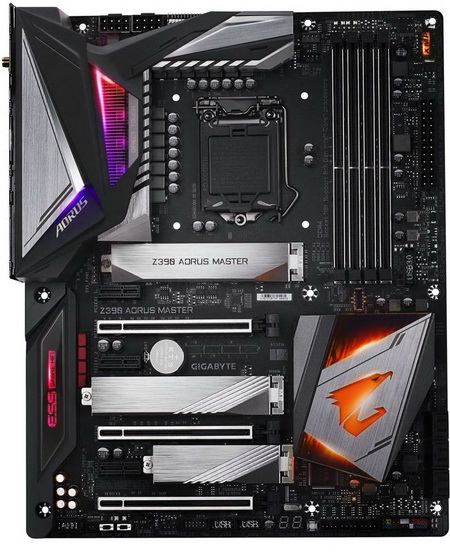INTRODUCTION

Ever since i started building PC's in the late 90's (initially as a hobby and later on as a job) I’ve always placed the motherboard over everything else but the CPU. I may not have cared much about what type of onboard audio card a motherboard had (although onboard audio cards didn't start appearing until many years later) or about its overclocking capabilities (at least not until that actually mattered) but i did care about quality and stability so as far back as i can remember I’ve always preferred using all the top of the line models. GIGABYTE has probably manufactured most of the models I’ve used to date and so since i just got back to reviewing motherboards today on our test bench is one of their best Z390 models to date (and probably for good since they are throwing their resources to the design, development and manufacture of Z490 models), the Z390 Aorus Master.
GIGABYTE offers a comprehensive product lineup that aims to “Upgrade Your Life.” With expertise encompassing consumer, business, gaming, and cloud systems, GIGABYTE established its reputation as a leader in the industry with award-winning products including motherboards, graphics cards, laptops, mini PCs, and other PC components and accessories. As a perennial developer in PC and server hardware and solutions, GIGABYTE is poised to extend our scope in business servers and cloud systems with hardware and software solutions that integrate AI and AloT applications to allow customers to capture, analyze, and transform digital information into economic data, accelerating businesses' success from edge to cloud.
The Z390 Aorus Master was released by GIGABYTE to replaced their high-end Z370 Aorus Gaming 7 model and so it should be quite ready for even the most demanding gamers. Advertised for gamers and overclockers alike the ATX-sized Z390 Aorus Master by GIGABYTE is based around an 12-phase design (12xIR3553 40A MOSFETs - 6xIR3599 phase doublers) and features three stainless steel reinforced PCIe 3.0 full-length slots (1x16/1x8/1x4 - x2 if an M.2 SSD is installed in the M2P connector), three PCIe 3.0 x1 slots (located between the three full-length slots), three Gen3x4 M.2 connectors (complete with AORUS M.2 heatspreaders - 2 of them are SATA compatible), four stainless steel reinforced and shielded DDR4 DIMM slots with support for up to 128GB RAM (4400MHZ frequencies and beyond), six SATA ports (once again courtesy of the Z390 chipset - RAID 0/1/5/10), 8 addressable RGB zones (4 onboard - 12 effects), rear base plate for improved durability and solid plated power connectors for optimal power stability (24pin & dual 8-pin connectors). In terms of onboard peripherals GIGABYTE equipped the Z390 Aorus Master with the Realtek ALC1220-VB HD 5.1/7.1 audio codec (which they paired with the ESS Sabre 9118 DAC - integrated headphone amplifier), Intel Wireless-AC 9560 adapter (2x2 antenna based 802.11ac with speeds up to 1.73Gb/s and Bluetooth v5.0) and the Intel I219-V 1 Gigabit LAN adapter complete with cFosSpeed internet acceleration software. As for connectivity the Z390 Aorus Master sports two USB-C 3.1 Gen 2 ports (one internal and one on the rear I/O), three USB-A 3.1 Gen 2 ports (rear I/O), four USB-A 3.1 Gen 1 ports (two internal and two on the rear I/O), 8 USB-A 3.0 ports (4 internal and 4 on the rear I/O) and an HDMI v1.4 port.

 O-Sense
O-Sense







.png)

